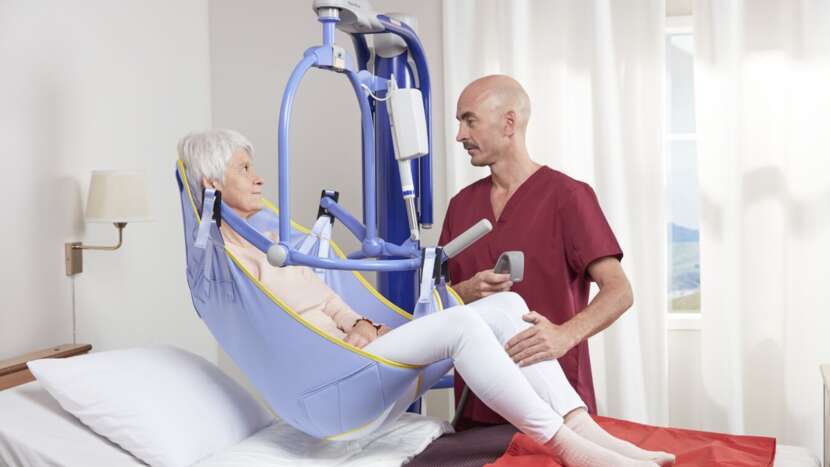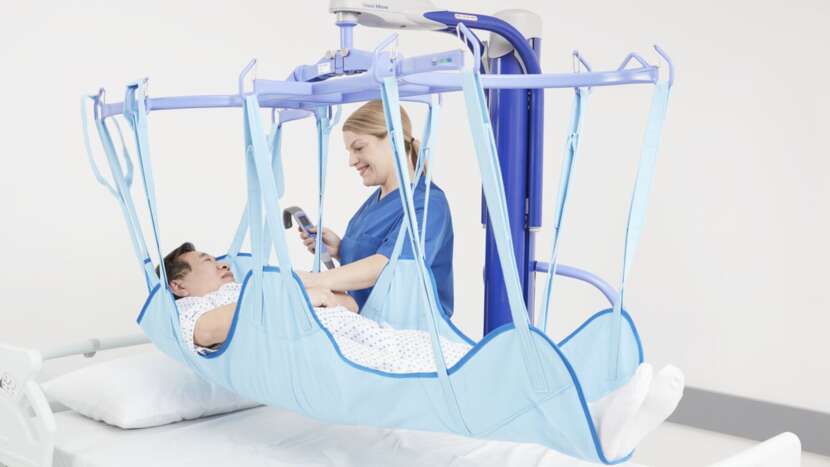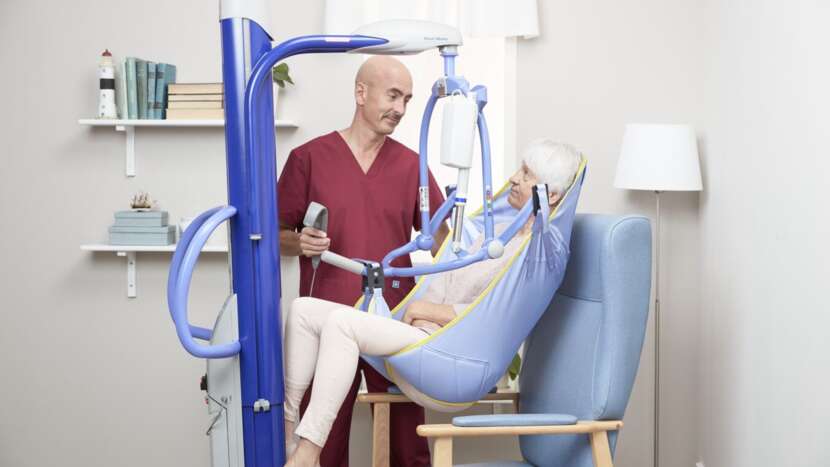Selecting the appropriate Hoyer lift is crucial for the safe and efficient care of individuals with limited mobility. Hoyer lifts, also known as patient lifts, are indispensable tools that enable caregivers to transfer patients securely and comfortably. Given the variety of models and features available, choosing the right Hoyer lift can be a daunting task. At Philadelphia Rehab, we believe that informed decisions lead to better outcomes. This guide outlines the key features to consider when selecting a Hoyer lift to ensure the highest levels of safety and comfort.

Understanding Hoyer Lifts
Hoyer lifts are mechanical devices designed to assist caregivers in lifting and transferring patients with limited mobility. Commonly used in hospitals, nursing homes, and home care settings, these lifts reduce the risk of injury for both the patient and the caregiver by providing secure, controlled transfers.
Types of Hoyer Lifts
Before exploring the features, it’s important to understand the different types of Hoyer lifts available:
Manual Hoyer Lifts: These lifts use a hydraulic pump and do not require electrical power, making them a reliable and cost-effective option. They do, however, require physical effort from the caregiver to operate the pump.
Electric Hoyer Lifts: Powered by rechargeable batteries or electricity, these lifts offer easier operation with minimal effort. They often come with remote controls for convenient and efficient patient transfers, ideal for caregivers who may have difficulty with manual pumps.
Stand-Up Hoyer Lifts: Designed for patients who can bear some weight, these lifts help them move to a standing position, facilitating transfers to chairs, beds, or toilets.
Ceiling-Mounted Hoyer Lifts: Attached to a track system mounted on the ceiling, these lifts are ideal for frequent transfers across different locations. They save floor space and provide seamless room-to-room transfers.

Key Features to Consider
When selecting a Hoyer lift, several features are critical to ensuring the safety and comfort of both the patient and the caregiver. Here are the essential features to consider:
Weight Capacity Ensure the Hoyer lift can support the patient’s weight. Overloading a lift can compromise safety and cause accidents. Most Hoyer lifts have weight capacities ranging from 300 to 600 pounds, with bariatric models available for heavier patients.
Sling Compatibility Hoyer lifts use slings to lift patients. Ensure the lift is compatible with various types of slings, such as full-body, commode, and sit-to-stand slings, to meet the specific needs of different patients.
Lift Range The lift range indicates how high and low the lift can reach. This is important for effective transfers from beds to wheelchairs or from the floor to the bed. A wide range of motion provides greater flexibility for different transfer situations.
Portability Portability is crucial, especially in home care settings. Look for lifts with wheels for easy movement between rooms and ensure the wheels can lock securely for added safety. Portable lifts are ideal for caregivers who need to transfer patients to different locations within the home.
Battery Life and Charging For electric Hoyer lifts, consider the battery life and charging time. A long-lasting battery that supports multiple transfers throughout the day is essential. Check if the lift comes with a backup battery to avoid downtime during charging.
Ease of Use Choose a lift that is easy to operate, whether manual or electric. Electric lifts with remote controls offer added convenience, allowing caregivers to operate the lift without being physically close to it.
Safety Features Safety is paramount when transferring patients. Look for lifts with built-in safety features such as emergency stop buttons, overheat protection, and safety belts to enhance security and prevent accidents during transfers.
Durability and Construction A durable, well-constructed Hoyer lift ensures longevity and reliable performance. Opt for lifts made from high-quality materials like steel or aluminum, and look for features such as anti-corrosion coatings for enhanced durability in moist environments.
Maintenance and Support Regular maintenance is essential for optimal performance. Choose a lift from a reputable manufacturer that offers excellent customer support and easy access to replacement parts. Ensure the lift comes with a comprehensive warranty to cover potential issues.
Conclusion: Making an Informed Decision
Choosing the right Hoyer lift is crucial for ensuring the safety and comfort of individuals with limited mobility. By considering key features such as weight capacity, sling compatibility, lift range, portability, battery life, ease of use, safety features, durability, and maintenance, you can make an informed decision that meets the specific needs of the patient and caregiver. At Philadelphia Rehab, we are committed to helping you find the perfect Hoyer lift to ensure optimal safety and comfort. Visit our website at Philadelphia Rehab for more information and to explore our range of Hoyer lifts designed to enhance the quality of life for individuals with mobility challenges.

FAQs: Choosing the Right Hoyer Lift
Q1: What is a Hoyer lift? A1: A Hoyer lift is a mechanical device used to assist in lifting and transferring patients with limited mobility safely and comfortably.
Q2: What types of Hoyer lifts are available? A2: The main types of Hoyer lifts include manual Hoyer lifts, electric Hoyer lifts, stand-up Hoyer lifts, and ceiling-mounted Hoyer lifts.
Q3: How do I choose the right Hoyer lift for my needs? A3: Consider factors such as weight capacity, sling compatibility, lift range, portability, battery life, ease of use, safety features, durability, and maintenance support.
Q4: What is the weight capacity of a typical Hoyer lift? A4: Most Hoyer lifts have weight capacities ranging from 300 to 600 pounds, with specialized bariatric models available for higher weight limits.
Q5: Are Hoyer lifts portable? A5: Some Hoyer lifts are designed to be portable, featuring wheels for easy movement between rooms. Check for wheels that lock securely for added safety.
Q6: What safety features should I look for in a Hoyer lift? A6: Look for features such as emergency stop buttons, overheat protection, and safety belts to enhance patient and caregiver safety during transfers.